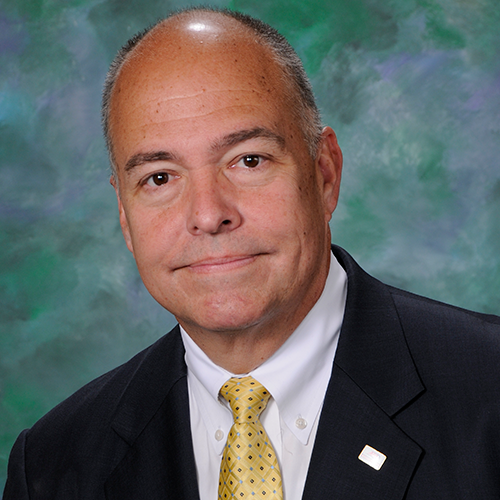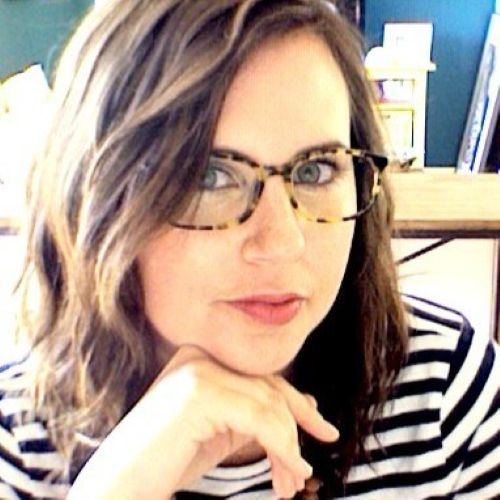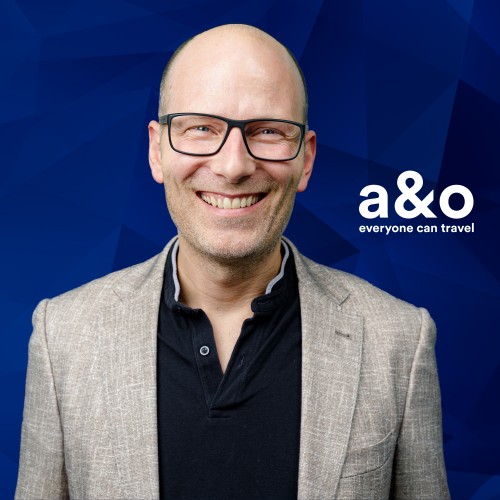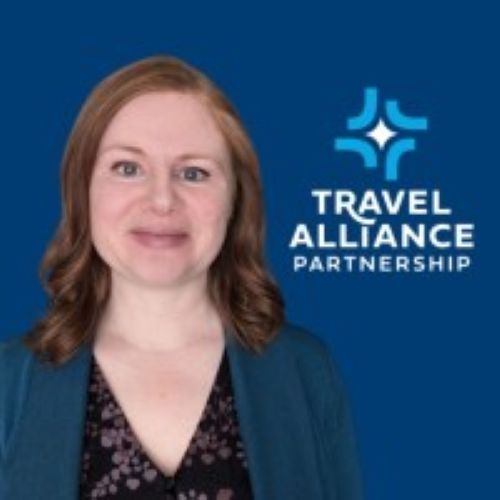Peter Pantuso
Episode 75: This is Not Your Grandparent’s Bus Tour, with Peter Pantuso
On this episode, you’ll learn how the Motorcoach travel industry is changing and catering to individual needs – not just one-size-fits-all group packages, with Peter Pantuso.
Peter Pantuso is the President, and CEO of the American Bus Association. ABA is the largest transportation, travel, and tour organization in the United States with nearly 4,000 members. It represents 65 percent of the nation’s private motorcoach fleet. The industry provides 600 million passenger trips annually. Peter oversees ABA’s government and regulatory affairs, membership, communications and marketing, meetings and conventions, finance, and publishing.
He also serves as President of the National Bus Traffic Association and the ABA Foundation. The association also manages nine councils and affiliates. Peter has testified before US Senate and House committees and has appeared in a number of media outlets include the New York Times, Wall Street Journal, Washington Post, ABC, NBC, CBS, CNN, C-SPAN, PBS, The Hill, and Politico. He serves on the US Chamber of Commerce’s committee of 100 leading association executives, and is on the boards of the American Highway Users Association, the Roadway Safety Foundation, the Motorcoach Marketing Council, and the Boy Scouts of America National Capitol Area Council. He is also an appointee to the US Department of Transportation’s Motor Carrier Safety Advisory Council and to the National Advisory Committee on Travel and Tourism Infrastructure.
More on Peter’s Background
Thank you for joining me, Peter.
Well, thank you. Great to be with you.
I’m really looking forward to our conversation. You and I were just talking on the pre-interview chat about listening to your own bio, and how surreal it can be to hear that. What I really like to do is have our guests tell their story in their own words to really give some context and texture to who you are and how you’ve gotten to where you are on your journey.
Absolutely. So I came to Washington in 1980 thinking that I would be here for just a few years. Almost 40 years and I’m still here for some odd reason. I started out working in associations in Washington and mostly doing government affairs. In 1996, there was a want ad in the Washington Post, when they still had printed ads in the Post, asking for someone who wanted to run an association. I sent my resume in and ended up here at the American Bus Association. It’s been an absolutely wonderful journey. I came here in 1996 so it’s going on 22 years. What makes it interesting and fun for me is that every day here at the association is a different day. There are no two days alike. The issues are always changing. The people are changing in the industry. The industry is itself changing. It has made for an absolutely wonderful experience. I believe at the end of the day we’re still making a contribution. We’re able to move the industry forward and represent it well in Washington, protect it where it needs protection, and help the industry to identify coming trends for the future. It’s been a great ride and I’m loving every minute of it.
That’s awesome. I think that’s so interesting how you say, “I went to Washington in 1980 and never left. It was not my intention but that’s what happened.”
Some people who live here would tell you that it takes almost that many years to find your way around or to get off the beltway if you end up on the beltway at some point. For me, that wasn’t quite the story but I am still here. It’s a great city too. It’s a fun place to live so I’m enjoying that part.
And you’ve made your way into the travel and tourism industry. You replied to a want ad to run an association that just so happened to be in travel and tourism – which is such a fun industry to be in. On this podcast, we talk a lot about marketing and creativity and collaboration, which I’m sure you have a lot to share with us. Before we dive in, can you talk a little bit more about what ABA does, because it’s so much more than just marketing and collaboration. You mentioned it when you talked about your government affairs background. We talked about all of the different safety organization and the different initiatives that you serve on. Take a few minutes and just talk a little bit about ABA and kind of what the organization does for the industry at the 10,000-foot level.
Sure. The ABA, American Bus Association, started back in 1926. At that time it was just a bus association. It was actually part of AAA. There were a group of bus owners and operators who got together in New York City. They were feeling that government was intruding on the business and needed a collective voice. Fast forward 92 years later, what they wanted and what the mission was in 1926 really hasn’t changed a lot. We still continue to represent the industry. The bus part of the industry is certainly a major focus of what we do. Because they’re heavily regulated, because there are so many rules, regulations, and laws that impact them, we do a lot of lobbying. That’s probably the core of what we do as an organization.
Then going back 40 or 45 years, there was a group of visionary board members who said, “You know, we in the bus industry take people to different destinations and to attractions. Maybe we should open up our doors to the travel industry as well.” So they began that process. They started a travel show that we call Marketplace. They invited the travel industry in to meet with the bus industry. This eventually expanded that to include tour operators. Now we represent the whole gambit. I mean we have bus owners and operators, we have tour operators. We have about 800 bus companies, about 250 tour operators. I should make clear, half of those bus companies also run tours. Our tour operation or tour operators segment really numbers probably closer to 600. We have travel members that number about 2,500. Then we have other suppliers to the industry and as you mentioned in the intro, we represent almost 4,000 different entities.
In addition to our government affairs efforts and our travel show, we also have an education component. We have publications that we provide to the industry. We have a number of electronic newsletters. We have training for the industry, especially for the motorcoach operators. We do lots of educational programs throughout the year, and webinars, and other online, and then some hard copy materials that go out to the industry. At our conference, we usually have about 50 educational sessions over the course of three or four days. So education’s become a big part of what we do.
As you mentioned, we have a Foundation. The Foundation really has two missions. One is research in the industry, both in the motorcoach industry and the travel industry. We also give out 22 scholarships every single year with a total value of about $100,000. We do quite a bit. Then we have other councils and affiliates, such as the Women and Buses Council. We run a Hispanic Motorcoach Council, an Asian Council, as well as a School Bus Council. We manage the Florida Motorcoach Association, SKAL International US. We are the administrative kind of back arm for them or back office for them.
Other groups include the National Bus Traffic Association which is a clearinghouse for scheduled carriers. Like the airlines do, if you switch airlines but you are on the same ticket, that ticket has to get shared among those airlines. The same thing happens in the bus industry when you travel from place to place and use two different carriers. Then those amounts or values of those tickets get sorted out through the NBTA clearinghouse. We’ve got a pretty wide swath of operations that we run. We’re not just a bus association anymore.
Yes. Thank you for going into that detail because I knew you weren’t just a bus association. I think that’s a great illustration of what it takes to support this industry. You started with, “We formed in 1926 and we wanted to be this collective voice and we were bus owners” but over time that’s evolved into so much more, because there’s so much more that needs to be done to support the industry and keep it healthy and strong.
Absolutely. We haven’t lost that initial focus. We still do that. We just recognized over time that the industry is more than busses. There are so many more components to it that make it successful. Motorcoach or bus operators would not be successful on their own if they didn’t have people and if the people didn’t want to go somewhere. The whole universe of tour and travel and mode of travel all come together and they come together here at the association very well.
How to Stand Out From the Crowd
That’s a great foundation for our conversation. Let’s dive into some of these questions starting with creativity. I think you’ve already kind of illustrated some creative ideas that have come out as the organization has evolved. One of the things that we like to look at is how you stand out from the crowd, understanding that there is so much competition in the tourism and hospitality industry. We like to explore different ways that organizations or businesses can really stand out. Do you have a few examples that you can share with us?
I do. I’ll look at it from our own perspective. At the association, we’ve got competitors. I look at it broadly as anybody who is taking a dollar, any other organization who’s taking a dollar from one of our members or potential members is a competitor because there’s only so much money to go around. What we have tried to do in order to be successful is really focus on the needs of the customer – the members – being able to give them something that maybe they couldn’t get anywhere else, and then offer incredible customer service.
I’ll give you an example. I came here, as I said, in 1996 and I went to our convention at that time. There were maybe 1,000 people attending at best. There were other shows and they were attracting 3,000, 3,500 people. The board asked, “What do you think? What do you think about our show?” I said, “I think it’s awful and we should either get out of the show business or we should invest in it. But those are the two options. You can’t keep doing business as we have been.” So the board stood behind me and said, “Okay, well let’s invest in it. We’ll give you the opportunity to make it grow” and basically, “don’t screw it up or you’re gone.” With their help and support and the support of a lot of members, we have what is now I think the dominant group travel show out there attracting about 3,500 members, as much as three times bigger than any other group travel show out there.
In the group travel space, domestic, we’ve developed a great show. We built it by customer service. We built it more than anything by listening to people. I think that is always the key. I don’t care what business you’re in- your customers will tell you what they need, or what you’re not doing well, or what you could do better, or what you’re doing a good job at. If you listen to them and follow them and take care of the customer everything else follows behind. That’s essentially what we’ve done to stand out from the crowd is more than anything listen to our customers or our members.
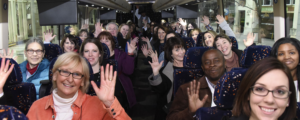
[bctt tweet=”“I don’t care what business you’re in. Your customers will tell you what they need, what you could do better, or what you’re doing a good job at.” – @PantusoPeter #WhyCollaborate #podcast”]
That’s great advice. I really like your example because, first of all, you had the foresight to say, “Look, we can’t continue this so let’s make a choice here. Either let’s not do it or we need to invest and really make this an awesome show that our customers will like. We want to be best in class in terms of what we’re bringing forward.” So that focus is what helped elevate that show. Listening to the customers but then really digging in and focusing on it and investing in it, as you said.
I think as a staff, we could have gone out and made it a better show than it was at the time. I certainly had some people on staff who are still with me today who were willing to do that. But without listening to the customer you miss some of those nuances. Again, I don’t care what kind of business you’re in – the customer always drives the end product. If they’re not driving the end product and you’re not talking to them and getting their feedback and listening to them, you’re missing a collective bet on your future.
Well, and for you, your customers come with different needs and desires you have to keep in balance. Can you speak a little bit about how you balance the needs of all of those different constituents?
Absolutely. I’ll give you a great example. There was a chairman of our board of directors. When he became chairman he said, “Gee, you know now that I’m chairman everybody’s coming up to me and telling me what they think we should be doing.” He said, “What do you do when people do that?” I said, “Don’t listen to them.” He said, “Well how can that be? You’re known for listening to people.” But it’s really about listening to these groups collectively. If you listen to people on an individual basis one may say, “march left” and then the next person says, “march right.” So you have to listen to them collectively.
It’s a little like making soup. You’ve got 100 different ingredients and you put a little bit of each one in. Some you have to add a little extra and some a little less. That’s sort of how it is, at least in my world, in the association world. You have a lot of people who are great contributors, with a lot of ideas and you listen to all of them but you have to listen to all of them kind of collectively. As you were to do that they begin to set a path, a collective path. You can kind of look at it as a bell curve too where you have outliers at either end but you start to group things into the middle of the bell curve and start to follow that path. That’s sort of how you get to where you collectively need to be at the end of the day. You listen to everybody but you do it a little more collectively.
I think that’s really great advice. I can relate to your board chair because you’re right, until you’re into a role like that you don’t realize how many people have opinions about what’s going on in the organization. But at the same time, it’s good that those folks are coming forward and that they care enough, they’re passionate enough to share their ideas.
Absolutely. When we go out and we ask members what they think, if it’s a letter that comes from me it’s got my personal e-mail, my personal phone number on it. I encourage them to let us know and to call and send an e-mail or call me directly and let me know what they think because that’s the only way we really know is to hear that directly. They’re not shy about it. Actually, I wish more of them would take me up on it. We’ll send an e-mail out to 4,000 people and I might get three or four calls at the end of the day. That’s a huge, huge help but I wish I’d get 40 calls or 50 calls so I got a broader range of views. But those four or five represent a segment of the industry and a voice in the industry, so it’s always good to do that and hear what they’ve got on their mind.
Creative Solutions to Challenges: Tailored Group Travel
Well, I want to change gears just slightly, still on the same topic of creativity but one of the other things we like to do is learn from challenges that we’ve faced. I always find it fascinating, the creative solutions that come out of some sort of adversity or challenge. Because when we’re in problem-solving mode sometimes some of the most creative ideas come forward. So I’m wondering if there is a challenge that your organization has faced and then if you could share maybe a creative solution that came from that.
Yes. I think the challenge that we face is the challenge of an organization representing the industry and always being in tune with the industry and sometimes helping to steer the industry a little bit. I can tell you, it’s been more than a decade ago, one of the things I began to see this whole concept of group travel changing. People want an individualized experience within a group. I always use the example of a cruise. You go on a cruise and nobody says, “Oh gosh, it’s a group travel experience with 3,000 people.” No, it’s an individualized experience. You get to pick your hotel room, what level you’re going be on, what kind of restaurants you’re dining in, whether it’s white glove or buffet, what you’re going be doing at each stop. That is the experience that the traveler wants today. They want to be able to choose and pick. They’re much more educated through the internet and through other sources than they’ve ever been before.
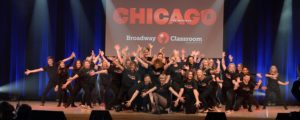
[bctt tweet=”“You don’t call a cruise a group travel experience with 3,000 other people. Motorcoach travel should be no different. You can customize an individual experience. That’s what travelers want today.” – @PantusoPeter #WhyCollaborate #podcast”]
Our challenge as an industry in the group travel space has been that we’ve always typically offered one experience for 50 people on a coach. So I began to start talking about creating that individualized experience within that group of 50 and replicating, to a certain degree, the cruise experience where it feels like an individual experience. I began to see and hear people say, “Well I’m already doing that.” It was a very limited number. By talking about it more and by featuring those change agents in our publications, or doing presentations where we could identify different individuals who were doing that, or giving examples through our educational programs, we’ve been able to move the industry a little bit in that direction, to be able to offer that individualized group travel experience and not just one size fits all. That’s been one of the challenges I saw. We have the benefit of having a voice and a voice through our publication, through our online products that we put out for our educational programs. We’re able to take those kinds of ideas and plug them into those forms so they get out more broadly to the industry.
I think that that’s a great example. Comparing group travel to the cruise industry is just such a good illustration of exactly what you’re talking about. I’m curious, with those change agents that you talked about or some of the things that have happened since you started to see this as a trend, can you share a little bit about how you’re seeing some of these tours become individual experiences?
Yeah, absolutely. A couple of different ways. I recently spoke with a woman who was running a tour. I think they were going to Chicago out of the Midwest if I recall. She said, “You know, I had three couples much younger than the average crowd. The couples were millennials. They signed up for the tour all individually. They didn’t know each other. When they got to the destination they didn’t want to do anything that the group wanted to do for most of the time, so they were all kind of on their own – but all wanted to go to Chicago.” So I think that’s one example where people are beginning to recognize that they can offer just a component of the trip, in that case, transportation as opposed to the other elements.
So they’re creating that experience just like you would on a cruise line where you get to the port of call and you can do whatever you want. Well, these people wanted to go, the port of call being Chicago but they didn’t want to do what the rest of the group was doing. It was a bit of an awakening for her to recognize that for her future trips and tours she can build that element into it and just offer what the customer wants at the end of the day instead of trying to give the customer something that they don’t necessarily want.
I’ve had other examples. I remember an operator a couple of years ago. He was from Toronto and he said, “Well I do the same thing now.” He said, “That’s how I differentiate myself with my competitor.” He said, “When I go to New York City I give a choice of hotels. You can be on Broadway or you can be over at the Javits Center at different price points. I give a choice of shows. If people don’t want to go to the show that’s fine but that’s an option. If they want to go to a group dinner they can do that or I give them a choice of restaurants they can do. Then I price the tour accordingly for those who want different pieces.”
What almost any piece of research will show you is that the more that you can make that an individualized experience, the more people are willing to pay a little bit extra for it as opposed to just saying, “Oh, okay I’ll sign up for this even though I don’t want the whole thing. But if I can make it something that I designed in part then I’m willing to pay extra for that convince or that level of service.”
Yeah. I think that’s so interesting. As you were speaking I was actually thinking to myself, well to offer service that way there would have to be a different kind of payment structures. You sort of have to rethink how you’re managing your business.
The other thing it means is that the travel industry must respond to this kind of change in the travel purchase. So the hotel’s got to understand that where I might have been bringing you 50 I’m only bringing you 30, but because I’ve got something that more people like, I might be bringing you 30 again in a couple of weeks and 30 after that. So I’ve got a product that’s more saleable than if I was just going to do it one way in the past. So the travel industry needs to recognize that they’ve got to do business a little bit differently as well.
The other big shift in travel is just this planning cycle. My parents planned their vacation a year out because my mother and father had to sign up for when they were going to have time off. Now the travel cycle’s literally days out before the trips. People are making a decision at the last minute or maybe a couple weeks out. Again, it requires everybody in that chain from the tour operator to the bus operator to the travel supplier to recognize that 60-day windows where everything has to be decided just don’t work anymore. Nobody wants to be stuck with rooms, we get that. Or empty seats in a theater, but there needs to be some coordination and communication between the operators and everybody else in the chain to understand that, “Hey, I think I’m still going to sell this trip out even though I’ve got a third sold three weeks out.” Things in that booking cycle change much more rapidly than they have before.

[bctt tweet=”“My parents planned their vacation a year out because they had to schedule time off from work. Now the travel cycles literally days or weeks out before the trips.” – @PantusoPeter #podcast”]
That’s a great point too. I think this is just such an interesting kind of case study and a challenge for being creative. Not only that but also having to think, how does this impact the entire chain? And you talked about education – putting those newsletters out and having educational seminars and things. But you need to have that education for not just the operators who might be putting the product together and thinking about how they’re going to sell to their customers, but also for the rest of the supply chain so that everybody’s on board.
Absolutely. Everybody’s got to understand it and everybody needs to buy into it at the end of the day.
Well, that was a great conversation. Before we move into our next subject area I’m just wondering if there are any exciting projects that you’re working on that you would like to share with our listeners.
Well, everything we work on is exciting in my mind! I won’t say that there’s anything truly exciting except for the fact that we are always looking at changing what we do from year to year. I mean our show is never stagnant. It changes. Our communications, our publications and the way we put them out and the way we communicate are always looked at fresh. Not only from year to year but from any given time throughout the year. So I won’t say that there’s any big monumental change but there’s certainly incremental changes that we’ll implement throughout this next year or through the current year and then into the future.
How to Make Collaborations Work for You
That’s great. Well, what I’d like to do then is to switch gears and talk a little bit about collaboration. Of course, in what you’re talking about with your organization where we have the tour operators, the motorcoach operators, the travel suppliers, there are so many pieces and components to collaboration. I’m wondering if you can describe a collaboration that has worked for you and talk a little bit about what really made that work.
Sure. A couple of really recent ones. We, along with the National Tour Association and the United Motorcoach Association, all kind of compete with one another, but we all share members and work together. We have been very engaged more recently on this proposal by the National Park Service to increase fees at national parks. In some cases, the fees for a bus for example at some of the top parks would go from $300 per bus to $1,200 per bus. There are other fee changes all across the board at those parks that collect fees. Some of them are looking at collecting fees where they haven’t done it before. In the last month, we’ve been together to see the Park Service and talk to them about why this just doesn’t work in terms of the way they’re doing it. We’re not opposed to fee increases certainly over time but to have a 400 percent increase is just insane in our opinion.
In a similar vein, we, the International Motorcoach Group, Trailways, and United Motorcoach Association, are working together with the NCAA on their college sports hiring of buses. We want to make sure they understand how the industry works, understand about bus safety, how companies are scrutinized by the Department of Transportation. And again, working together to get a collective message out.
Then lastly, we’re working with United Motorcoach Association together on a fly-in to visit members of Congress on April 10th and 11th. We’ve both done individually fly-ins in the past. This is the first year we’ll be doing one together. There’s a new CEO at the United Motorcoach Association and we’ve found that we have great opportunities to work together much more so than had taken place in the past under the prior leadership. So just three examples of where we see opportunities to work together and where, as an industry, we’ll have a much stronger voice by working together than we would have individually.
Yeah. I really agree with that. I think that those are some really great examples. What I find really interesting about that is how you’ve found these areas where these are going to impact all of us regardless of what organization it is, right?
Yes.
So, the increase in fees or the need to have better bus safety or better understanding of how that works, and this fly-in opportunity that you described in April. All of it to me seems like it just gives so much more impact when you have your collective membership kind of behind you, right? So instead of just being 4,000 members strong, you’re multiplied.
Absolutely right. I tell all the groups I speak within the industry that collectively you’ve got to work together to earn the business too. When a visitor is putting a tour together and they’re going somewhere, borders don’t mean much to them. Community, city borders, even state borders sometime. If I use the Washington DC area as an example, nobody who’s on the coach knows where the border is between Washington, Alexandria, Arlington, Prince William County, Maryland. I mean you just don’t know.
When you’re trying to market yourselves, you’ve got to come together and market collectively as a group if you want that business. You’ve got to get them there first and then once they agree to come to an area then you can think about where are they will be staying, which hotel, are they going to be in Arlington or Maryland or downtown DC. The travel industry must be collaborative in our efforts.
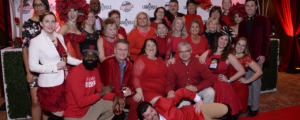
[bctt tweet=”“When you’re trying to market yourselves, you’ve got to come together and market collectively as a group if you want that business.” – @PantusoPeter #WhyCollaborate #podcast”]
Then working not only among themselves as a region but working sometimes with people who are outside of their region and thinking about where the visiting group is coming from. Is there somebody in a route that they can be a partner with, so at the end of the day they can present the operator an itinerary that goes from Indiana all the way to Washington DC and places in between? That can make the tour something very, very unique – something that might not otherwise be there if the operator was putting it together individually.
I think that’s an awesome point. I’m wondering if you have seen more collaborations happening just the way you had described it on the travel supplier side. Have you seen a trend or maybe any kind of a change in that over your tenure in the role that you’ve had?
Yes. I definitely have. I think I see a lot more people working together. I mean again I go back to the Washington area. DC, Maryland, and Virginia all work collectively together and market themselves as the capital region. I see that in a lot of other places. I still see places where individual cities or hotels or attractions market just themselves. I try to reinforce that whenever I can. It’s all about getting a critical mass there. Not worrying about who’s going to get this group, or where are they going to stay today because the more you can get everyone there, the rising tide raises all boats. If you can work together to get more people there, everybody benefits at the end of the day when the groups show up.
Best Practices for Entering a Partnership
Right. Absolutely. I couldn’t agree more. So can you give us some advice on best practices, our listeners we like to kind of just exploring some best practices on how to enter into a partnership or how to have a successful partnership? Are there certain things that you do in any of these scenarios that you’ve shared with us that you think are really key to making them more successful?
Yes. Absolutely. Can organizations come together? Do you represent a broader audience of like-minded people by coming together? That’s certainly important. Sometimes you find people who are from totally different spectrums that come together. We did a number of years ago, an environmental study. When we were trying to bring together a group to talk about the motorcoach and how environmentally friendly it was. We had a group that included the environmental community, some very conservative individuals, and a labor group who never would have worked with a conservative group and never did before until we brought them together. So sometimes it’s finding people that really complement one another in addition to having the same end goal.
The other thing to be aware of is making sure everybody understands their role. You sit down with your three or four or five partners and identify kind of why we’re all together, what each one brings to the table, what each will be doing as this project moves forward. Then a coordination at the end of the process in terms of how this process gets promoted, and of course credit where credit is due. As long as everybody knows their role and why they’re at the table I think that works best at the end of the day as a beginning point.
Absolutely. I just want to recap some of those points that you made because you just shared some really great pieces of advice. I like how you described like organizations and like-minded people being part of the basis for choosing a partner or finding partnerships that might work. Then not only like-minded but complimentary. It’s so important to stay focused on what the end goal is and then identifying everyone’s roles. I think those are some very good key pieces of advice on to how to really make partnerships successful. So I wanted to make sure our listeners caught all of that.
Yep. No, those are the key pieces. You hit it right on the head.
Final Thoughts
Well, Peter, this has been a really great conversation as I knew it would be. Before we wrap up are there any final thoughts or anything that you’d like to share that maybe I didn’t ask you that you had wanted to share with us today?
Well, I would only share again how excited I am about group travel. Over the years I would hear the naysayers, the naysayers being people that aren’t familiar with the industry saying, “Well the industry is going away. It’s dying. The seniors aren’t riding coaches anymore.” The reality is that motorcoach and group travel are as strong as they’ve ever been. In the motorcoach industry, we move almost 600 million passengers a year, which is just a little bit less than the airlines but it’s almost 20 times more than Amtrak moves. These are mostly small business owners making a big economic impact – as a small business does!
So the industry’s doing well. It’s alive and well but it’s obviously changed a lot. Now more than any other time is a time to understand how it’s changed and how to capture those new travelers who, again, are looking for something very, very different than my parents looked for when they took a bus trip, then I look for when I take a trip, or that certainly somebody in their 20s and 30s is gonna be looking for. There are lots of opportunities.
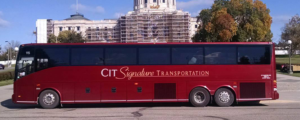
[bctt tweet=”“Now more than any other time is a time to understand how group travel changed and how to capture those new travelers who are looking for something very different than what my parents looked for when they took a bus trip.” – @PantusoPeter #podcast”]
I’m so glad you said that because I couldn’t agree more. I’ve actually been in some conversations where people have said, “Oh really, group travel? Well, I hear that that’s on a decline.” No. It couldn’t be more opposite than on a decline. What I think is also exciting about what you just shared is that these are small business owners. They’re often family-owned business. They’re legacy businesses. They really are the very fabric of America, right, and entrepreneurship. It just so happens they’re in the motorcoach industry and that they serve the travel industry.
Yes. There are about 3,000 motorcoach companies. Outside of a couple handfuls, the average company has about 7 to 10 coaches. Small business, many time multi-generational. They’ve got two or maybe three generations that have been involved, sometimes even more. The same thing with many tour operators. They’re family businesses. They’ve been around for years or they’re just starting up into the business but because most of them, most of them don’t have a big brand name that resonates across the country, most people don’t know it. They’re in a local market. People in a local market might identify with the bus company or the tour company there but not outside of that market. It’s kind of like a quilt, right? You have all these bits and pieces and you stitch it all together and it’s pretty mighty. That’s the way I look at the group travel industry and the people that are in it.
I couldn’t agree more. I’m just reminded of an interview I did with Mark Hoffman from Sports Leisure in Sacramento. He said, “People like to say that we’re in the golden years of travel because there’s this huge interest in travel right now.” He goes, “I like to call it the platinum years.” He says because he actually gives credit to the new generation, to the millennials for making travel so much higher on the priority list for their parents or their grandparents. He just made an observation that he sees it being accelerated. Folks are accelerating their desire to travel and that couldn’t be more impactful for the motorcoach industry I would believe.
Yeah. That’s a great point. For all forms of travel.
Yes.
I’ve got one of our members based in Chicago and he does weekend trips to Paris. Leave on a Friday, come back Sunday night. A lot of his travelers are millennials or into their 40s but they’re looking for a quick getaway. Travel is so important to them. That’s what I have to reinforce among my motorcoach and tour operator members in the industry over and over again. It’s not about price. It’s always about the destination but it’s not about price. It’s about that experience. If you can go to Paris for the weekend that’s fantastic. You don’t need to bring that travel experience down to the lowest common denominator when it comes to cost. It’s about creating that unique opportunity that somebody wouldn’t have otherwise.
Right. Absolutely. Well, thank you very much, Peter, for joining me. This has been a great conversation and we’ll look forward to speaking with you again. I appreciate you spending your time with us today.
My pleasure. Thanks, Nicole.
American Bus Association: www.buses.org
We value your thoughts and feedback and would love to hear from you. Leave us a review on your favorite streaming platform to let us know what you want to hear more of. Here is a quick tutorial on how to leave us a rating and review on iTunes!
